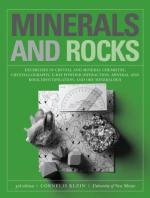|
This section contains 1,755 words (approx. 6 pages at 300 words per page) |

|
X-ray crystallography is an experimental technique for determining the arrangement of atoms in a crystalline material using highly energetic electromagnetic radiation. X-ray crystallography provides the most direct and accurate means of establishing detailed molecular structure--the spatial relationships of atoms with each other including bond lengths and angles.
X-ray crystallography is based upon the idea that atoms regularly arranged in crystals scatter x rays in a manner analogous to the way that the regularly spaced grooves of a diffraction grating scatter light. The relationship between the observed points of x rays scattered from a crystal can be calculated using the same mathematics as used to interpret a diffraction pattern. Working backward from the positions of the observed "diffracted" x rays, the crystallographer calculates the positions of atoms in the crystal.
For diffraction phenomena, the spacing between diffraction points can be most accurately calculated from the diffraction pattern...
|
This section contains 1,755 words (approx. 6 pages at 300 words per page) |

|


